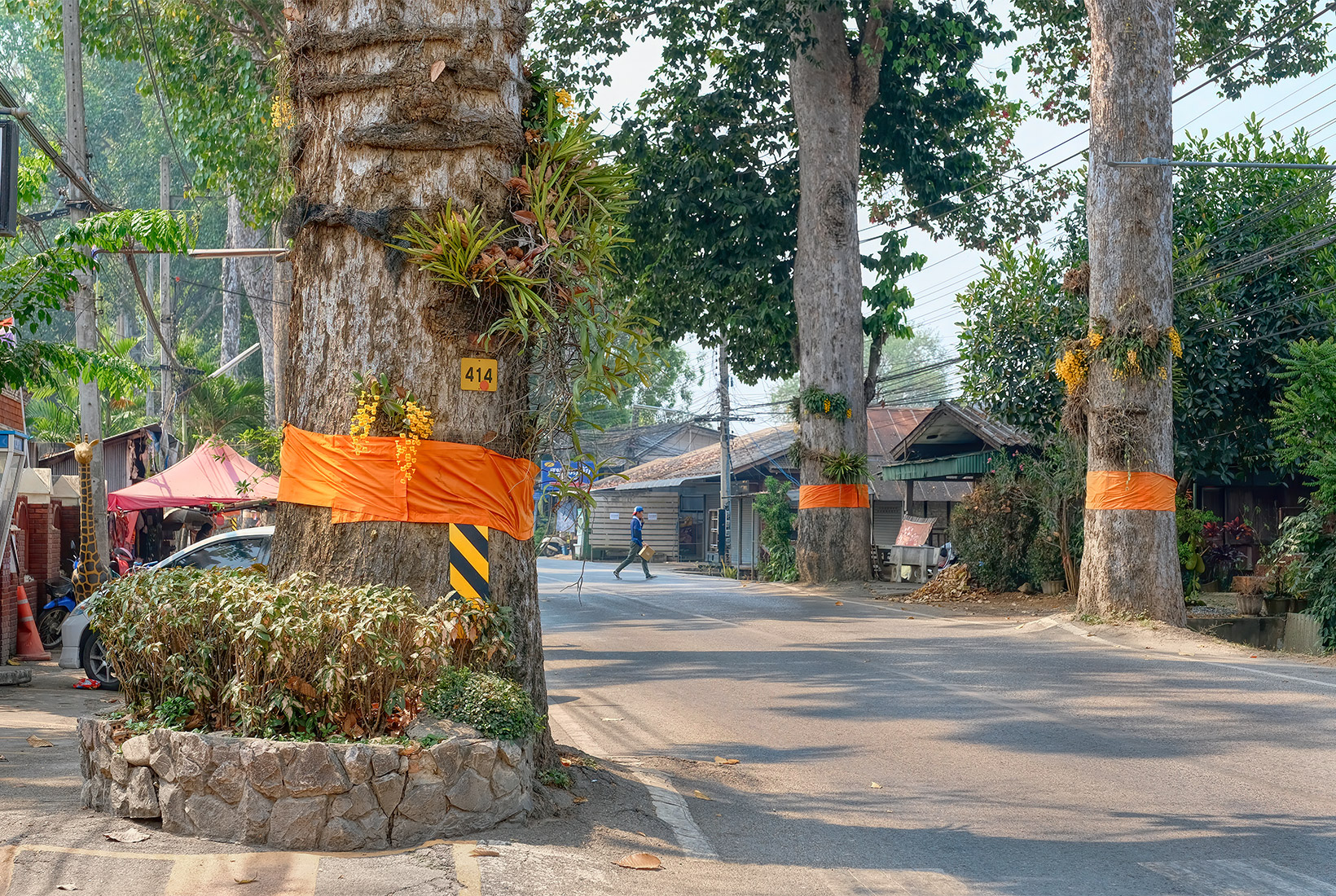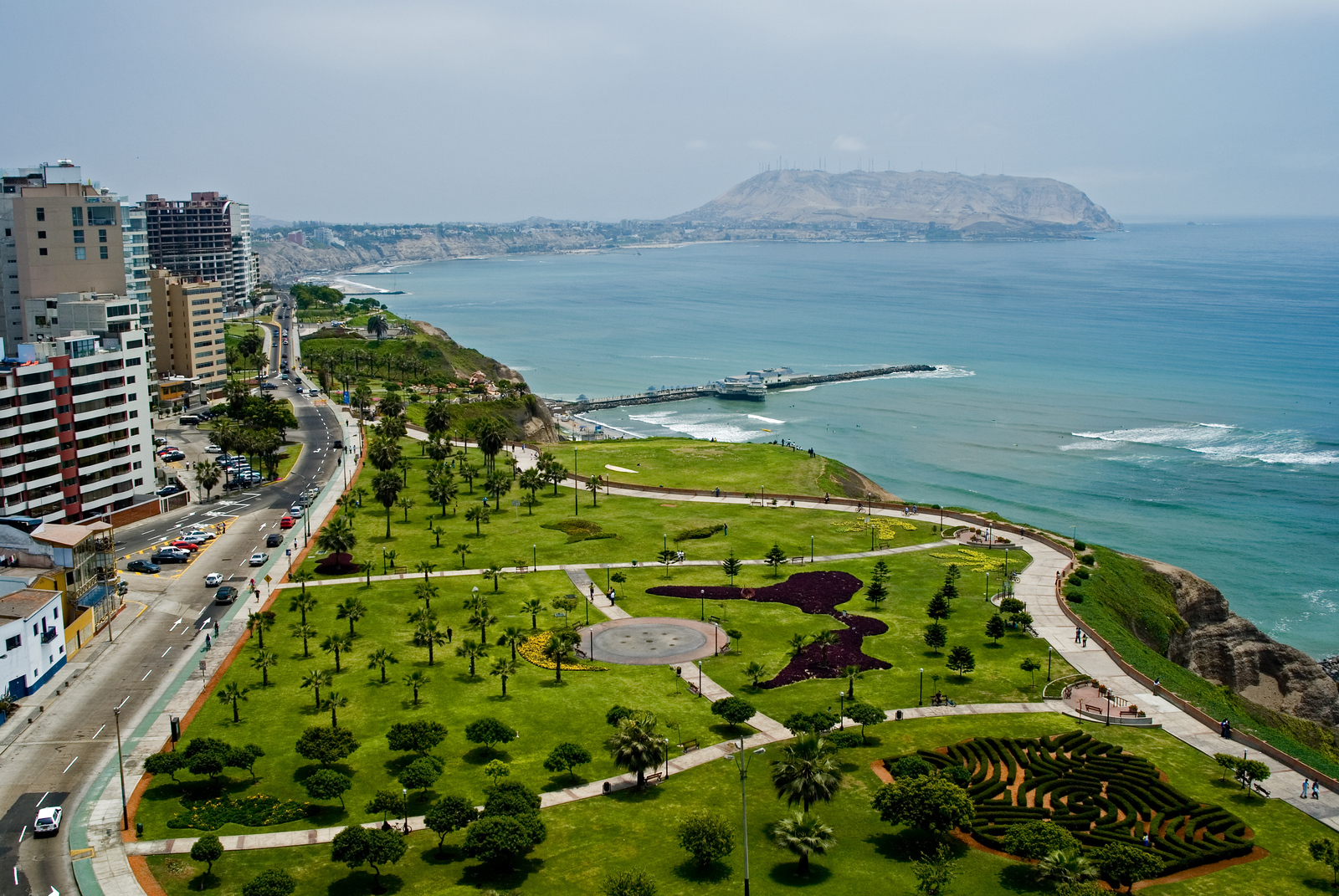The first time I saw the Dton Yaang Naa trees I was transfixed. I was returning from a press trip to learn about the care of Elephants in the Kingdom of Thailand, when our van driver turned down Chiang Mai-Lamphun Road. Twin rows of behemoth trees flanked the narrow, twisting road as far as I could see. Thrusting my head out the window, I craned my neck up to see their crowns. Some soared to heights of 150 feet. The base of each massive trunk had been wrapped in a saffron-colored monk’s robe. These 130-year old spirit trees had literally been ordained as monks.
A month or so later I returned to the walk beneath them. Capturing decent photos of the Dton Yaang Naa trees was no easy task. Again and again, I darted into the heavily trafficked roadway, snapped a photo, and scampered back to the shoulder before being splattered on the pavement like a bug on a windshield. Yet even with cars, trucks, and Tuk Tuks screaming by, a sense of peacefulness pervaded the thoroughfare. It felt like these spirit trees were watching me, protecting me from harm.
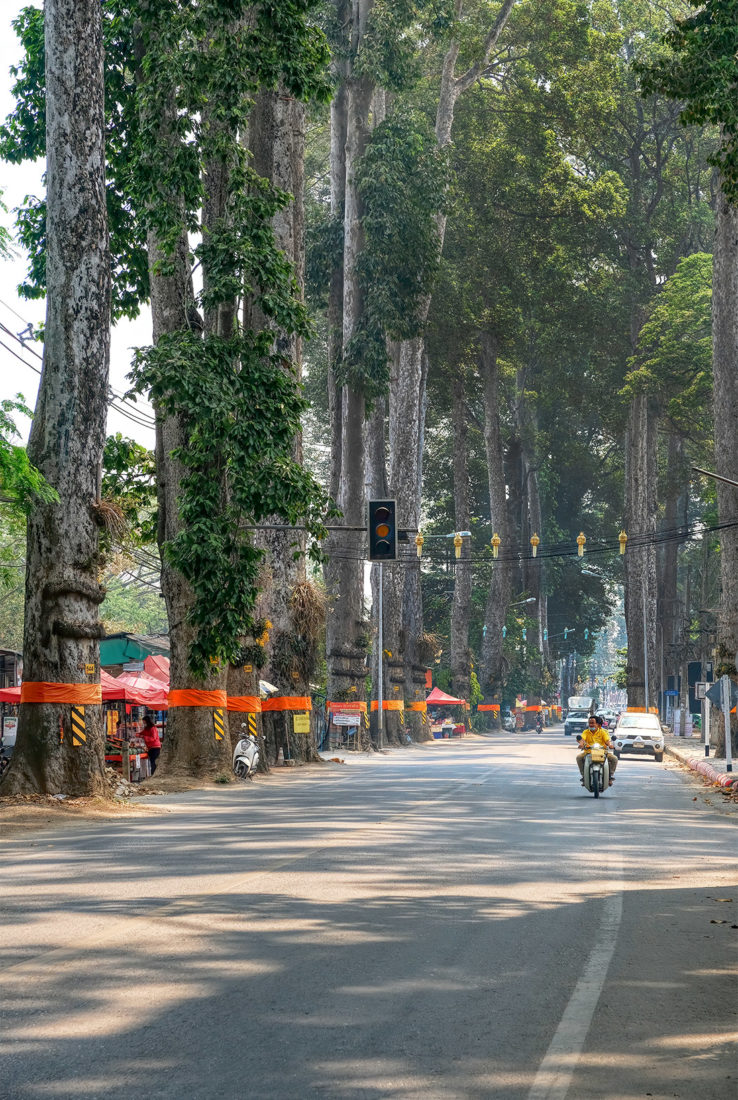
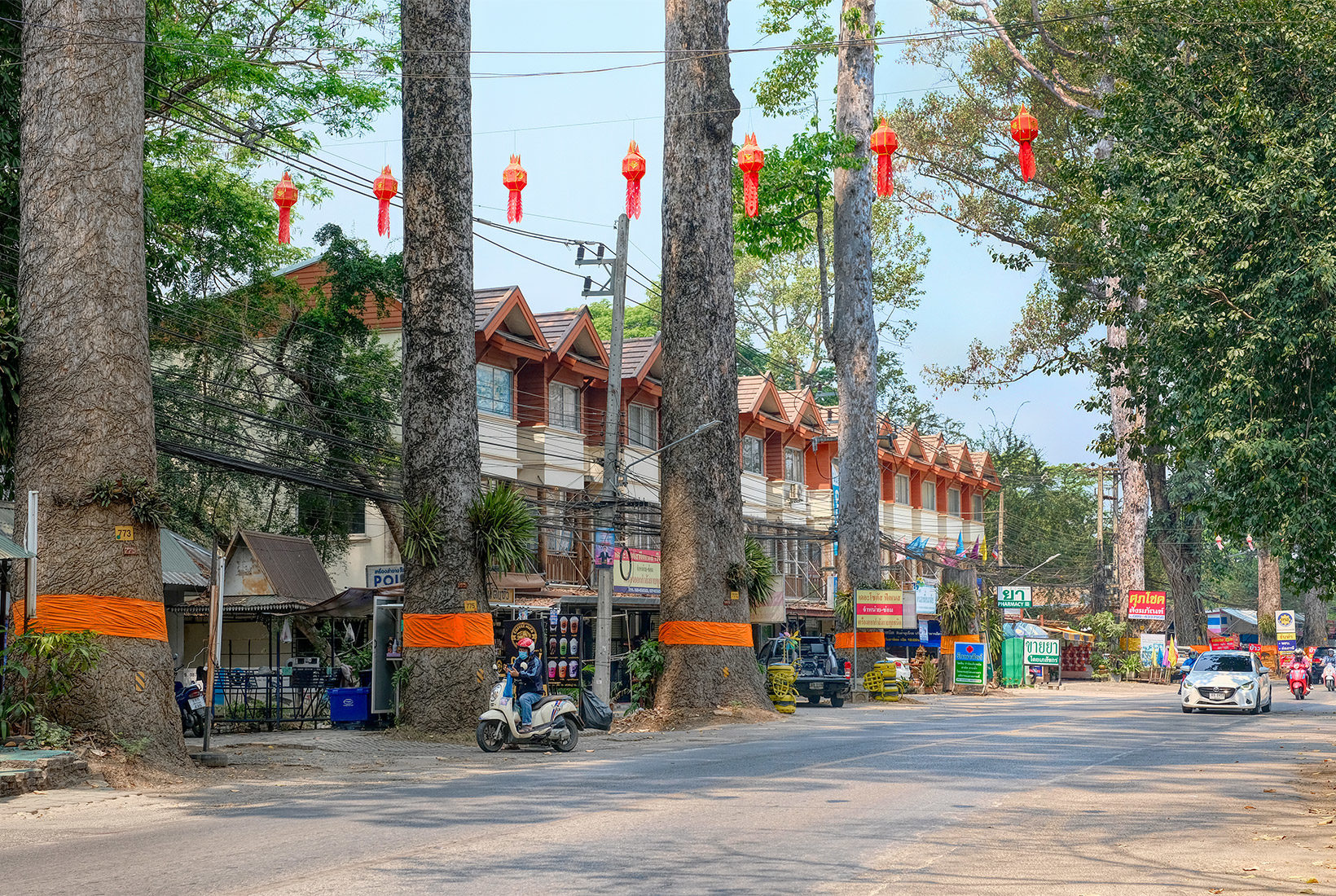
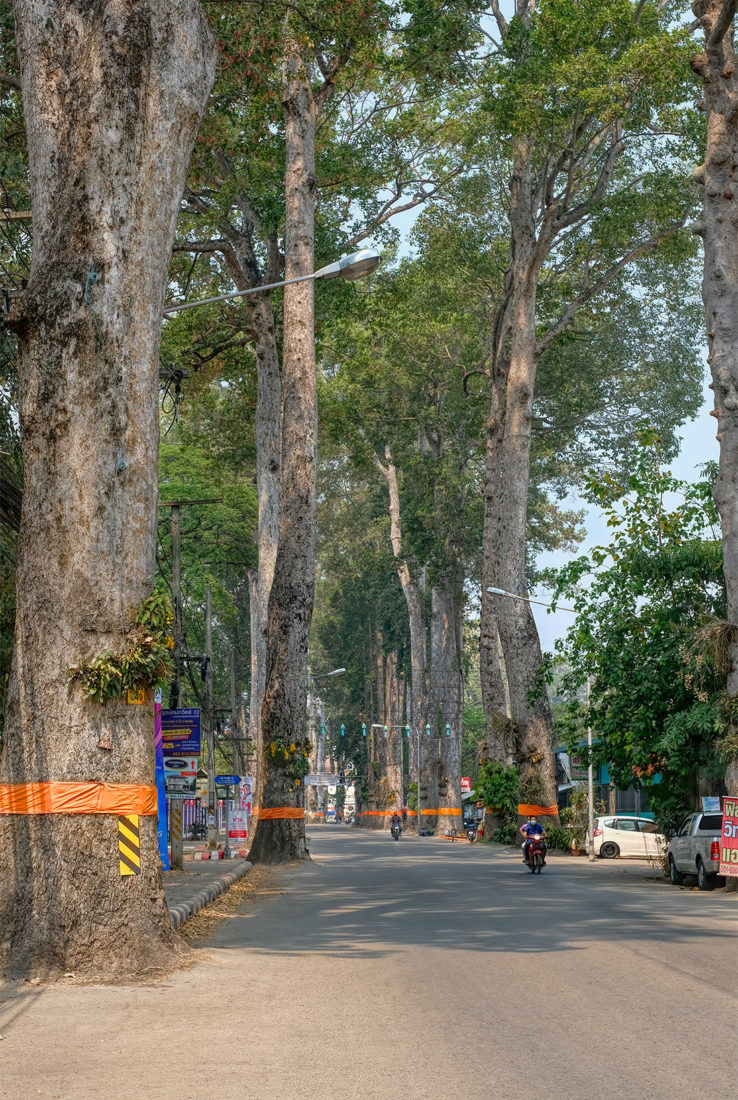
In 1882, the governor-general of the Phayab region donated the first batch of Yaang Naa trees. They were planted near Naowarat Bridge, on the banks of the Mae Ping River in Chiang Mai. It soon became evident that they were valuable for the shade they provided. Twenty-nine years later, the Provincial Office provided enough saplings to line Chiang Mai – Lamphun Road from the bridge south to the border with Lamphun Province. For decades, they provided protection from the searing tropical sun, especially for Royal retinues traveling on foot from Bangkok to inspect the northern provinces.
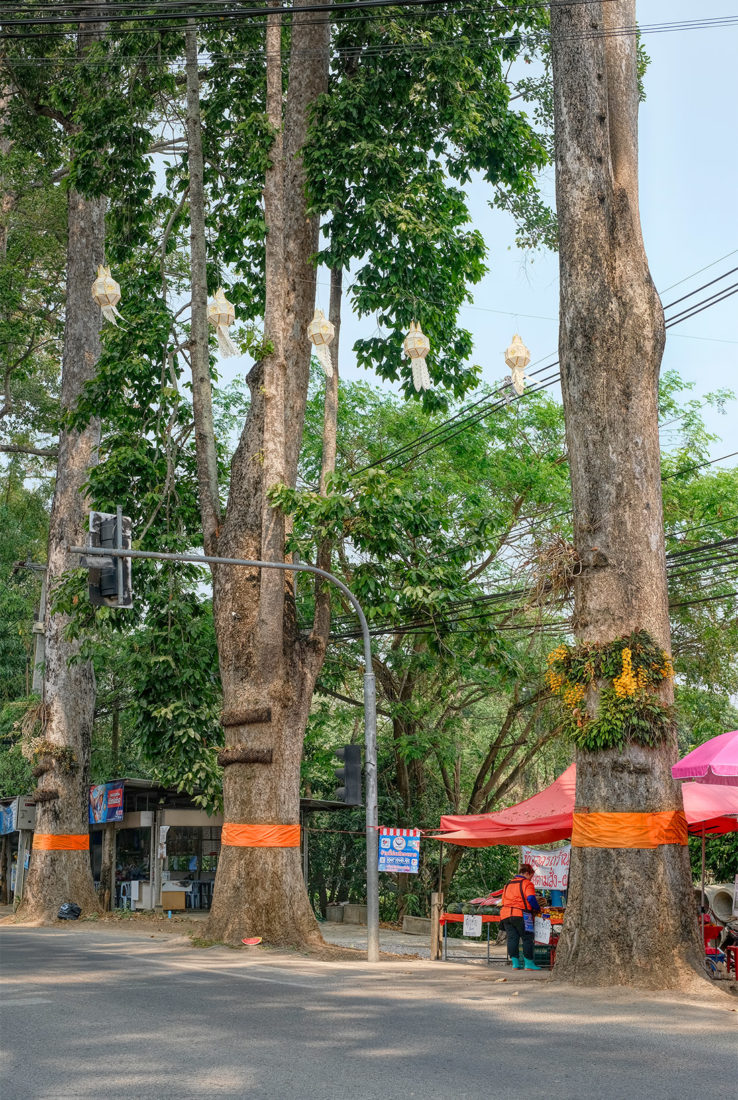
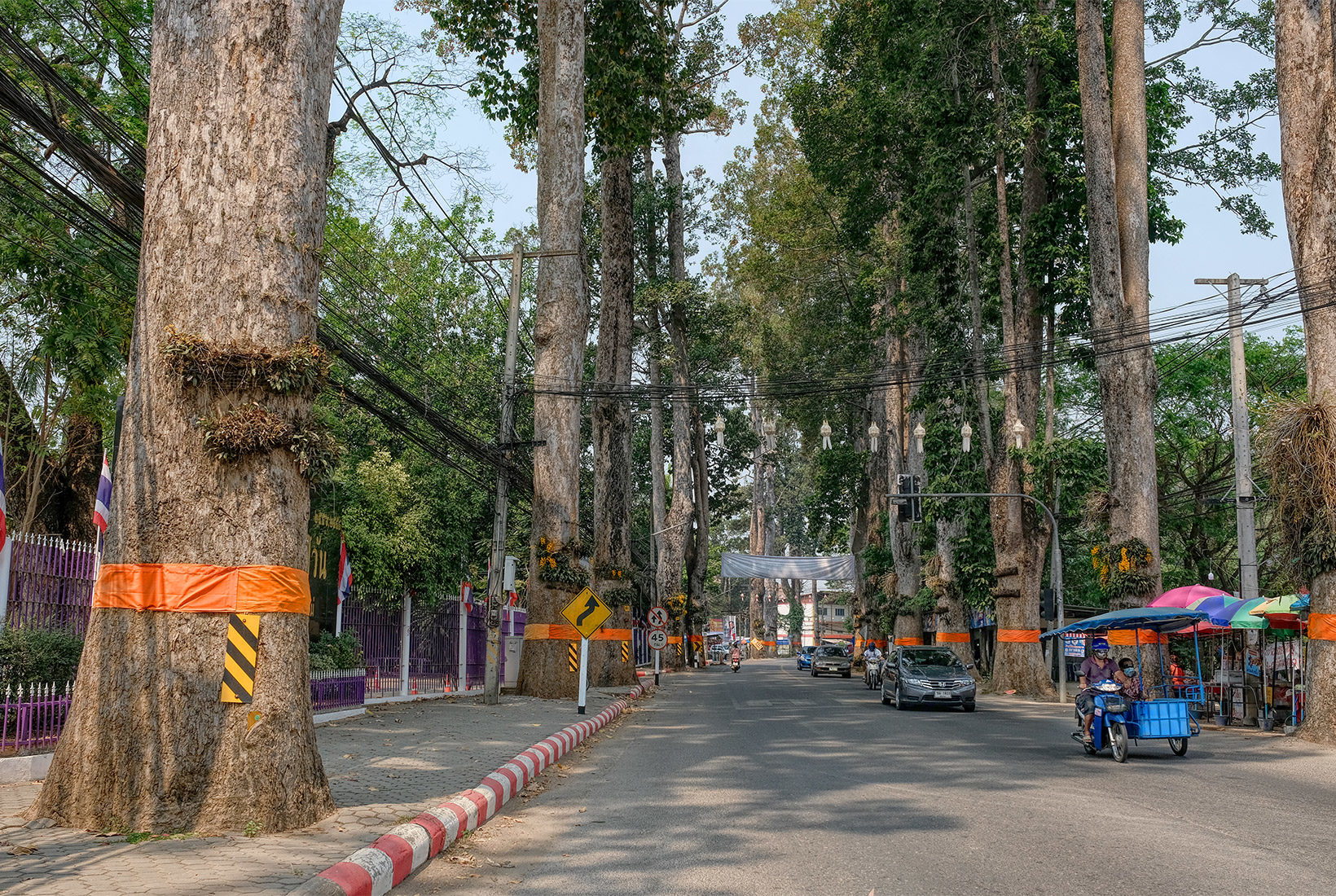
Some accounts say that 5,000 trees were originally planted, while others claim the number was 2,000. Over time, many were cut down to make way for housing and intersections. By 1991, less than 1,000 remained, and many of those were slated for removal to accommodate a road-widening project. When news of this reached the King, it is said he was not pleased. Seizing upon this opportunity, the governor of Chiang Mai Province arranged for local monks to “ordain the large rubber trees” that lined the road from Chiang Mai City to Lamphun Province (often mistaken for rubber trees, they are actually one of the 165 known species of the Dipterocarpaceae family).
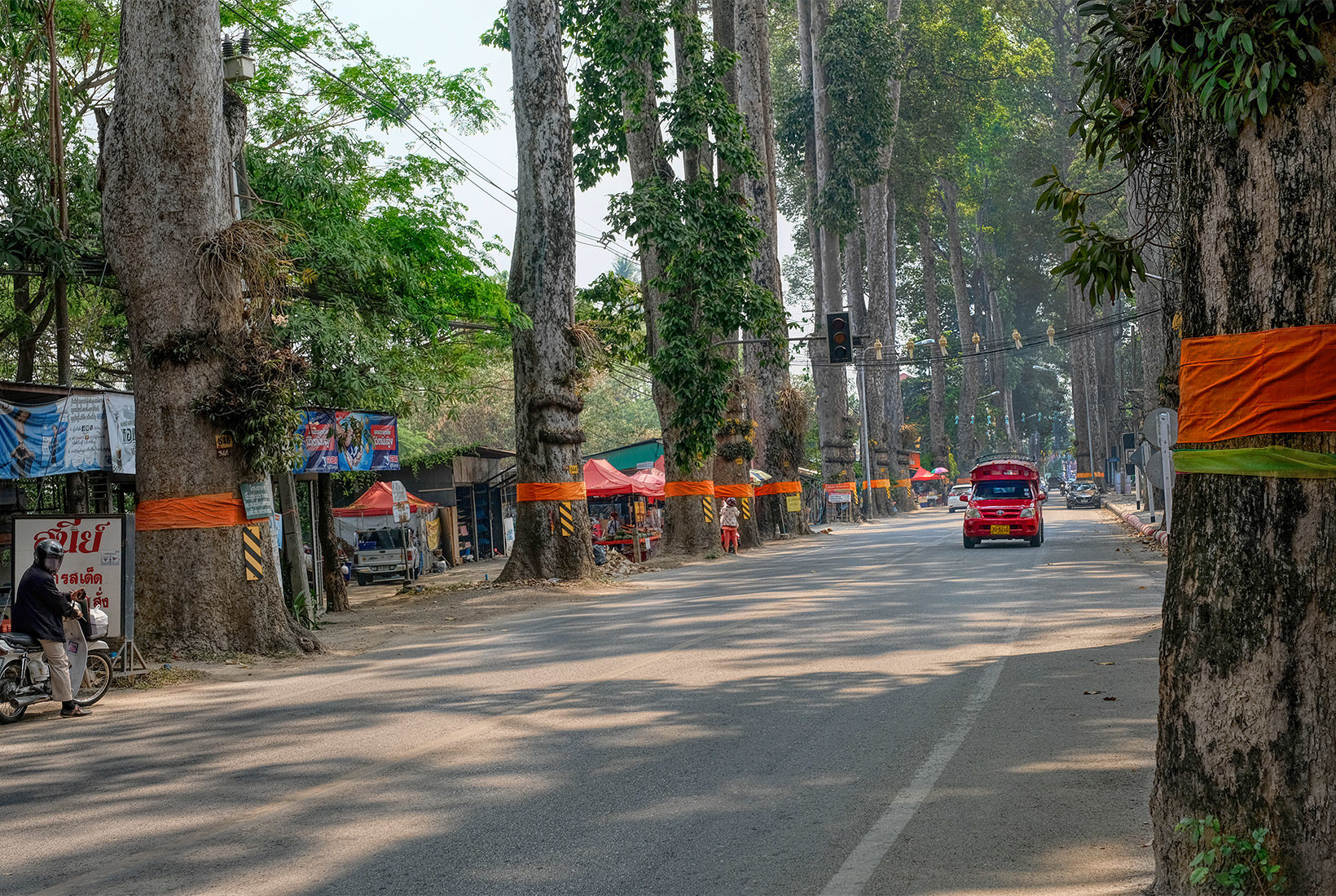
The practice of protecting special trees has a long history in Thailand. The Bodhi tree is revered because the Buddha came to enlightenment while sitting beneath one in Bodh Gaya, India. Bodhi trees grow on the grounds of most every Wat in Thailand. Not only are their trunks swathed in colorful cloth, bamboo poles are placed beneath their limbs to help the tree support the weight. These so-called spirit trees (phi ton mai) are also ubiquitous in cities and villages across Thailand.
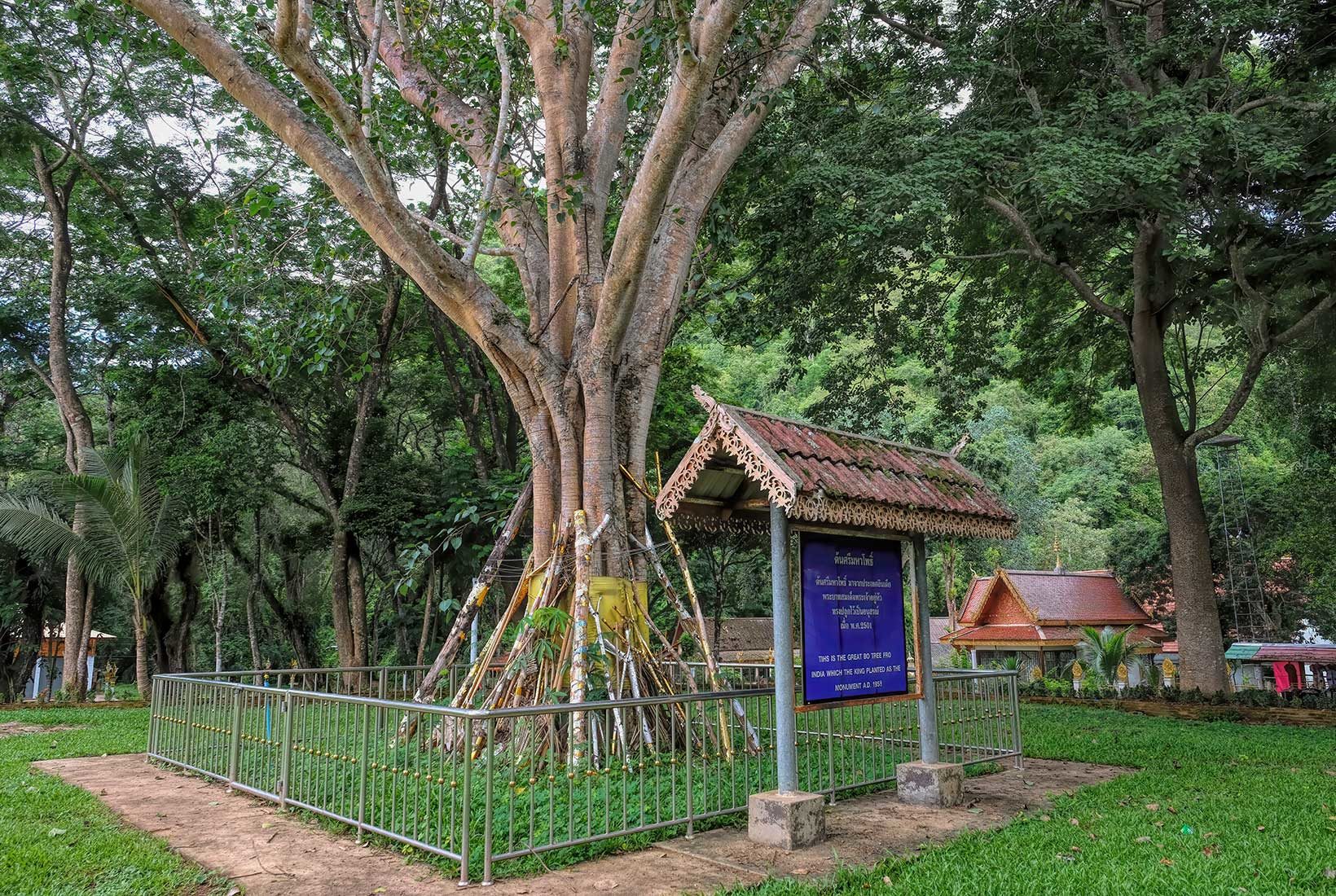
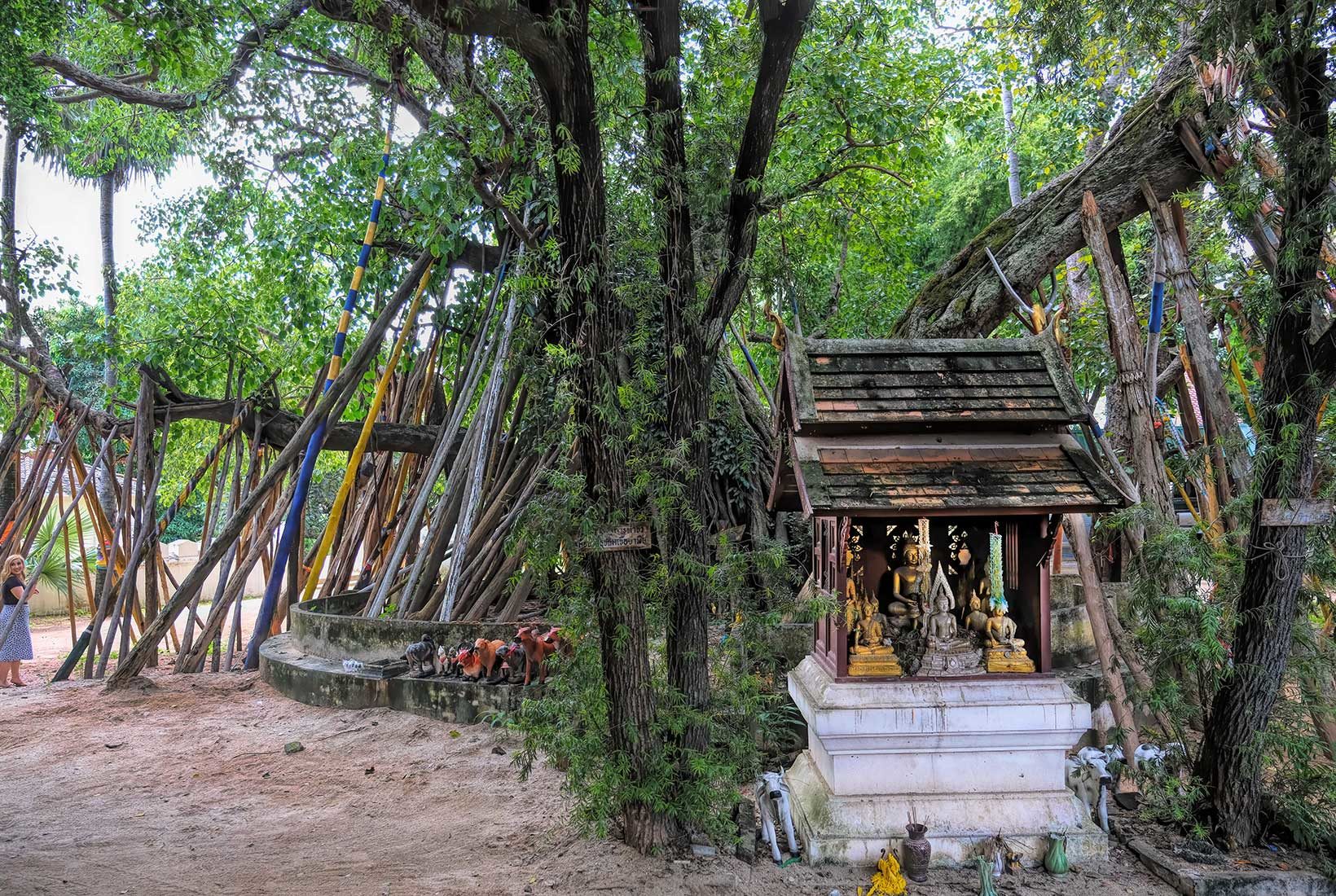
The term “spirit trees” derives from a Thai Buddhist belief that certain trees are the residence of a spirit, usually that of a deceased villager. They wrap these tree trunks in colorful cloth, construct a small spirit house at the base of the tree, and keep it supplied with candles, incense, and food offerings. Harming a phi ton mai is believed to bring misfortune, sickness, or even death upon the perpetrator. Over time, wrapping a tree in strips of colorful cloths became synonymous with protection. Today the practice is regularly employed to protect huge, old growth trees, like the one that stands at the entrance to my condominium project, seen below.

If swaddling the trunks of spirit trees has long been common practice, the concept of ordaining trees is relatively new. The first tree ordination was performed in Thailand in 1988 by the monk Phrakhru Manas Natheepitak, a member of the forest tradition in northern Thailand. These Monks follow a strict regimen. They live deep in the forest, in small wooden huts that are elevated to protect them from wild animals. They walk miles each day, foraging for food as they make their way between sites to attend Dharma talks. The forest tradition monks had seen first-hand the damage caused by deforestation. They were forced to install rows of barbed wire fencing around their compounds to deter illegal loggers.
One day, Phrakhru Manas heard a story about two highway workers who had been forced to cut down a Bodhi tree. Following its felling, they suffered great misfortune. Capitalizing on superstitions that are intricately woven throughout Thai Buddhism, he began performing ordination ceremonies on trees. Once ordained, the trees were deemed untouchable. Just three years later, the governor of Chiang Mai used the same technique to protect the Dton Yaang Naa trees on Chiang Mai-Lamphun Road.
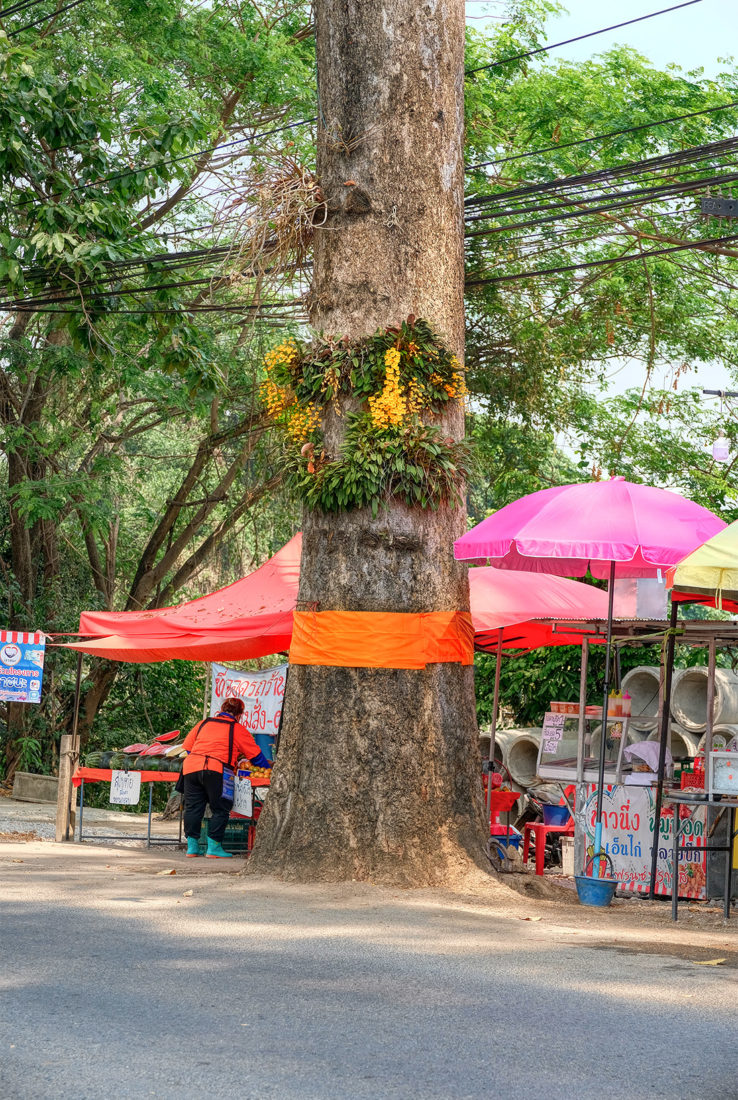
Today, members of the community tend them with great respect. Sidewalks that once entombed their roots have been torn up and the ground around them is regularly fertilized. Residents who live beneath them pay a fee of 30 baht ($1) per month to a fund that reimburses anyone who suffers damage from falling branches. The community has even attached flower boxes planted with multi-colored orchids, which burst into bloom and cascade down the trunks each spring. I walked a mile or two that day beneath their overarching crowns. I could tell they were happy. They were smiling down upon me, in all their statuesque glory.
